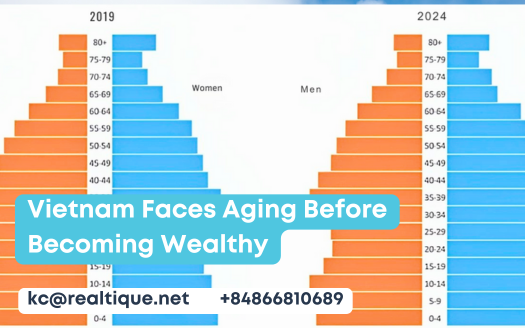Vietnam Faces Aging Before Becoming Wealthy
Vietnam is expected to exit its demographic golden age by 2038, transitioning into an aging society while still classified as a developing economy. With over 14 million citizens aged 60 and older—projected to reach 18 million by 2030—concerns are mounting over the long-term socioeconomic impact.
The aging index (ratio of people over 60 to those under 15) has steadily increased, making Vietnam one of the fastest-aging populations in the world.
Table of Contents
Rising Concerns Over Low Birth Rates
Civic groups and legislators from various provinces are urging the government to address declining birth rates. Despite a current average fertility rate of 1.91 births per woman, among the lowest in Southeast Asia, the trend continues downward.
Proposals include:
- Extending maternity leave to 7 months for second births
- Policy changes to remove penalties for third-child births
- Balanced sex ratio initiatives to address gender imbalance at birth
Legislative Action: Population Law in Progress
The Ministry of Health has completed a draft proposal for the new Population Law, expected to be submitted to the National Assembly by late 2025. The law will:
- Encourage families to maintain replacement-level fertility
- Address regional disparities in birth rates
- Support aging population needs with healthcare and labor solutions
Socioeconomic Risks of Aging
The shift to an aging society could shrink Vietnam’s working-age population, increasing the economic burden on younger generations and straining public services, especially in healthcare and pensions.
Meanwhile, the population pyramid shows a shrinking base (children) and expanding top (elderly), highlighting the urgent need for structural changes in infrastructure, employment, and social security.
Future Outlook and Government Response
The government is taking proactive steps to mitigate risks, including:
- Drafting pro-natalist policies
- Promoting labor productivity and automation
- Encouraging private sector involvement in elder care and housing
If successfully implemented, these measures aim to help Vietnam adapt to its demographic shift and continue progressing toward high-income status without falling into the trap of “getting old before getting rich.”






